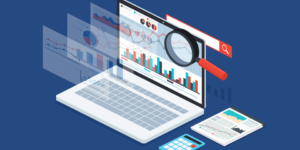The current market poses numerous challenges to development firms, with stagnant interest rates, slow capital deployment, high labor and construction costs, economic or geopolitical uncertainty, and ever-evolving regulatory hurdles all contributing to an environment where it’s difficult to get projects off the ground. Even though the Federal Reserve lowered its benchmark interest rate by 50 points in September of 2024 and another 25 basis points in November, financing challenges remain moving into 2025 and beyond. High cap rates are also an issue as global instability and supply change disruptions persist. When real estate development is already a complex process, developers and investors are taking notice of the increased obstacles and looking for modern solutions. Leveraging commercial real estate data analytics will continue to empower development teams to overcome challenges, and your team should consider taking a data-informed approach.
Here’s everything you need to know about real estate data analytics, and the many benefits a data-driven strategy can provide to developers.
What is Real Estate Data Analytics?
Real estate data analytics are the use of data to gather, analyze, and interpret market information to support property sales, purchases, rentals, and management. Data analytics have the potential to play a role at a variety of stages of the development life cycle, from acquisitions through building stabilization. Real estate professionals can gather and analyze data to market trends, property values, and potential risks, enabling them to make more informed decisions and optimize project incomes.
Here are a few key ways data analytics can play in the development process.
- Predicting Trends: In a tumultuous market, the ability to predict trends is invaluable for your development team. Forecasting future market trends, such as property values, sales data, demographic trends, economic indicators, and consumer behavior, will allow your team to predict outcomes.
- Optimizing Performance: Analyzing data from portfolio performance can help optimize investment portfolios and make informed decisions about acquisitions, sales, or renovations. By identifying underperforming assets, forecasting future returns, and benchmarking against market trends, investors can allocate resources more strategically. Taking a data-driven approach will enhance risk management, maximizes returns, and supports long-term portfolio growth.
- Enhancing Profitability: Data analytics can significantly increase the profitability of a project by providing real-time insights into cost trends, schedule performance, and resource allocation.
Key Aspects of Real Estate Data Analytics
Data analytics in commercial real estate provide valuable insights for informed decision making throughout the development lifecycle. Developers can optimize investment strategy by looking at market trends, property values, tenant behavior, and other techniques to optimize processes, manage risks, and maximize profitability.
The key components of data analytics include:
- Standardizing and Centralizing Data: Data has been traditionally stored in outdated and error prone spreadsheets, making it difficult to make useful comparisons or cross-reference insights. The ability to standardize and centralize data is critical to real estate data analysis, allowing you to analyze workflows and proactively avoid pitfalls.
- Real Time Insights: Outdated data can compromise your team’s decision making, and technology can enable access to up-to-date reports in centralized location to make sure your team is operating off the same insights and nothing is out of date.
- Automated Reporting: Reporting has also been a historically manual process, and compiling data can be a time-consuming and tedious process. Modern data analysis often involves leveraging technology to automate the reporting process will help you leverage data more efficiently and effectively.
Data Collection and Analysis
Data collection can come from multiple sources, including property records, demographics, market trends, and other economic data. Here’s how each data type can help you develop a data-driven development strategy.
- Property market trends, such as market conditions, supply and demand dynamics, rental or vacancy rates, and absorption rates helps informed decisions about where and when to invest in projects
- Demographic data, such as population growth, income levels, and age distribution, can also be useful for developers to identify up and coming markets
- Development and project data, gathered from past development projects, helps your team make smarter decisions in early project planning and procurement, lowering the risk of future change orders or exposures
- Zoning and regulatory data, such as zoning and building codes in a designated area, helps with stronger decision making and lowers the risk of regulatory obstacles derailing your project timeline
Informed Decision-Making
Commercial real estate data and analytics are crucial to drive strategic decision making about pricing, investment, marketing, and risk management. Access to data in early project planning will allow you to create different budget scenarios, evaluate bidding opportunities, and consider historical performance insights as you make decisions. Limited access to historical or project data forces teams to rely on gut-decisions, from acquisition through the construction process, and this can lead to damaging miscalculations and errors.
Property Valuation
Property valuation can also be facilitated by data analysis, which helps your team determine fair market value and flag any over or undervalued properties. AI driven valuation models will analyze numerous factors like historical sales data, market trends, location, and more to give more objective estimates of a property’s sale value. Data analysis can also potentially surface properties that are being undervalued by looking at the broader market or unexpected market trends. Development teams can then leverage these nsights to make informed decisions about investing, buying, or selling properties.
Market Trend Analysis
Market research is an important part of the due diligence process, and AI’s ability to process large amounts of data will provide stronger market insights, crunching numbers on economic conditions, property values, and other demographics. You can use this to obtain insights on leveraging data for better returns to make more accurate predictions about project ROI and more confidently identify promising markets and assets.Investors and developers can then identify undervalued opportunities, mitigating risk with real-time data analysis, and adjusting strategies based on trends before the competition catches on.
Risk Management
Data-driven approaches to the development process allows for the early identification and mitigation of a variety of risks across a project’s lifecycle. Here are a few categories of risk you can track on your development project, and how data analytics can help you avoid issues:
- Climate Risk: Data helps mitigate climate risk in the development process by providing your team with information about geography or what weather-resilient features might be most appropriate for the property. Developers can incorporate data analytics into climate risk assessments, modeling climate risks to build strategically in weather-prone regions and evaluating ROI on sustainable design features.
- Construction Risk: The majority of pitfalls in the development process occur in the construction phase, and data analytics can help prevent your budgets or timelines from getting derailed. Historical and vendor data can help you assemble accurate budgets and allow you to make informed decisions about contractors.
- Economic Shifts: Economic shifts have been increasingly important to consider over the past couple of years amid uncertainty and tumult. High interest rates and slow capital deployment have created significant obstacles to getting projects off the ground. Developers can use predictive analytics to anticipate market shifts and adjust financial forecasting accordingly.
See how AI is revolutionizing development strategies and allowing teams to set up projects for success in as early as the pre-development stage.
Operational Optimization
Your firm can use AI and automation to boost employee efficiency at every stage of the development process, eliminating the need for tedious and time-consuming administrative tasks. AI-powered document management systems automatically capture and organize every project document, extracting data and organizing across budget lines. Once data is tagged and indexed, you can quickly and easily search contracts, proposals, or other documentation to make data-driven decisions. Eliminating the need for manual entry allows your development and accounting teams to focus on important tasks and high-level decision-making.
How Real Estate Data Analytics is Used
Investors can leverage AI to improve personalization and provide recommendations based on budgets, preferences, and location requirements. The tools can also complete tasks such as lease data extraction, automated comps optimization, and deal flow optimization to facilitate the investing process. AI can also provide insights on debt maturities and an owner’s overall leverage to help investors gauge how likely a property is to sell after construction. As a result, AI will help you bolster and diversify your portfolio, which lowers risk.
Risk Assessment
The many capabilities of AI mean it can be a powerful tool for risk assessment and mitigation on a given project, helping with predictive models and real time data. Investors and developers are relying on AI to manage portfolios, identify potential risks, and make data-driven decisions about property acquisitions and financing. AI can proactively assess and flag risks associated with the different stages of a development project, such as construction delays, regulatory changes, or economic turbulence. Development teams can address these concerns before they become a major concern that could disrupt project timelines or cause overruns.
Learn more about automation in real estate development and how it can help you leverage data-driven decision-making.
Performance Optimization
Leverage operational data to improve management, leasing, and other workflows. Data analytics can help with a variety of operational workflows, helping reduce waste in resource allocation and waste reduction, providing predictive maintenance for proactive repairs, and understanding tenant preferences or tailor services. Tools with data-driven capabilities can also reduce the administrative burden of leasing tasks and help set competitive rent prices. You can also gather and utilize data on occupancy rates to identify opportunities to consolidate space, design collaborative areas, and plan for future scaling.
Benefits of Real Estate Data Analytics
Real estate data analytics have a variety of benefits across the development process, and competitive firms should utilize modern real estate development software to gain a data-powered competitive advantage.
Here are a few benefits your team can expect to see by taking a data-driven approach:
- Improved Investment Decisions: Data-driven insights help maximize returns.
- Reduced Risk: Proactive risk identification and mitigation.
- Increased Efficiency: Automation and analytics streamline operations.
- Competitive Advantage: Data insights drive smarter decisions.
- Faster Transactions: Data accelerates sales, leasing, and approvals.
- Enhanced Property Value: Smarter pricing, marketing, and operations lift value.
Northspyre’s Real Estate Analytics Advantage
Northspyre can be a critical tool for any development team looking to take a data-driven approach to the project lifecycle. Northspyre leverages automation, predictive AI, and analytics to offer your team access to real-time data insights and workflow tools that allow you to move the project lifecycle with speed and intelligence.
Unparalleled access to insights and analytics for project teams, costs, budget lines, and vendorsallows you to identify patterns, evaluate performance, and optimize and move across your portfolio. The platform cuts manual work and updates information instantly, meaning your team will have real-time insights into the status of your project and its financials. Northspyre’s AI Budget Optimizer allow development teams to maintain flexibility in project-specific budget structures while ensuring consistent data organization across their entire portfolio
Learn more about Northspyre’s innovative AI approach and how other technology is revolutionizing real estate development.
Book a demo and learn more about how your team can become a data-driven leader in the industry.



